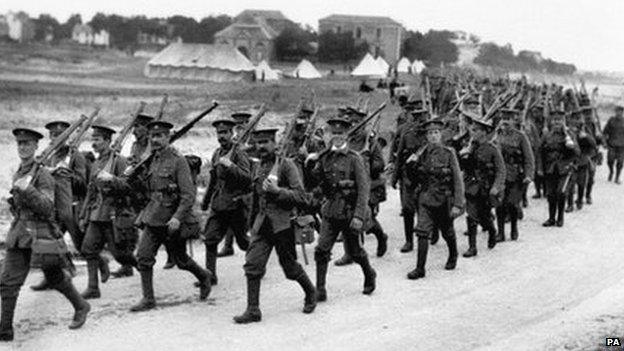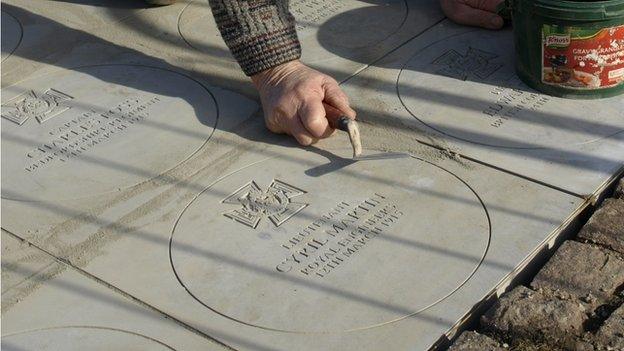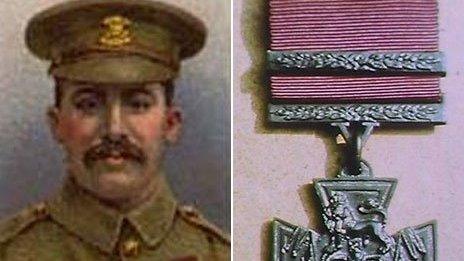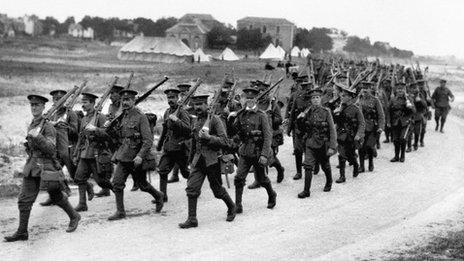Commemorative paving stones honour Lincoln VC soldiers
- Published

Commemorative stones honoured L/Cpl Leonard Keyworth and Cpl James Upton
Commemorative stones honouring two Victoria Cross (VC) recipients from World War One have been laid in their home city of Lincoln.
L/Cpl Leonard Keyworth and Cpl James Upton were both awarded VC medals for their actions in May 1915.
The memorials were unveiled at a ceremony at Drill Hall as part of a scheme to lay a paving stone in the birth place of each recipient.
Other places, including East Grinstead have already honoured their soldiers.
The specially-commissioned stones are being given to councils in areas where VC recipients were born.
The stones feature an electronic reader to allow smartphone users to find out more about the soldiers.

The paving stones are being laid in the birth place of VC recipients around the country
Mayor of Lincoln, Andrew Kerry, said: "It is a great honour to pay tribute to two men who won the Victoria Cross during the First World War, both a credit to this historic city."
L/Cpl Keyworth joined the Queen's London Regiment after being refused entry to the Lincolnshire Regiment for being too young.
He stood exposed during a battle in France for about three hours throwing grenades amongst the Germans, who were close by, his family said.
His family said they were "very proud".
Cpl Upton, who served with the Sherwood Foresters, put his life at risk retrieving wounded men from the battlefield at Rouges Bancs, France, his family said.
He rescued the wounded while exposed to rifle and artillery fire - one wounded man was killed by a shell while he was carrying him.
His great great nephew, Darren Upton, who had travelled from Saudi Arabia to attend the ceremony, said: "The fact that he did it, and lived, makes it more remarkable.
"There are not many people who are not given the VC posthumously."

Victoria Cross

Some 649 Victoria Crosses were awarded in WW1
Britain's highest military honour, the Victoria Cross is awarded for "for valour" in the face of the enemy
It was brought into existence by Queen Victoria in 1856 to honour acts of bravery in the Crimean War
The VC can be awarded to a person of any rank in any service and civilians under military command
The cross is made from the bronze of Russian guns captured at Sebastopol, though research suggests a handful were made from other sources
Source: Ministry of Defence

- Published5 March 2015

- Published17 September 2014

- Published4 August 2013
